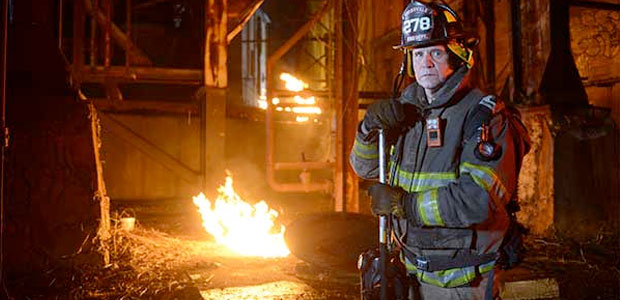
Protecting Firefighters from Invisible Hazards
Whether responding to a carbon monoxide call or performing an overhaul and investigation, a gas detector could save your life or the lives of nearby civilians.
- By Holly Mazzia
- Apr 01, 2020
When firefighters attack a structure fire, the hazards to life and health are obvious. The flames, the heavy smoke, and the extreme heat are clear reminders of what’s at stake.
What’s often overlooked, however, is the danger of gas hazards both during and after a fire. As information on the hidden dangers of fire smoke proliferates, a growing number of firefighters are realizing that gas monitors are a vital part of their turnout gear. Atmospheric testing at fire scenes has shown that toxic fumes are present at every stage of the fire—and without a portable gas detector, there is no way to determine whether the air in the cold zone is actually safe to breathe.
Research has shown that toxic gasses linger at alarming levels well after the fire has been extinguished. But because most firefighters do not carry portable gas detectors, they’re probably unaware of the danger and may remove their SCBA mask and risk inhaling toxic fumes.
Fire smoke is a complex mix of toxins, and hydrogen cyanide (HCN) has emerged as one of the most common and dangerous. While carbon monoxide (CO) often gets public attention, HCN is commonly found alongside it, and together, they’re known as the “toxic twins.” Both are asphyxiants, meaning they interfere with the body’s ability to process oxygen. Individually they’re dangerous. Together, they’re even more deadly.
In the past, HCN was not a concern after a typical house fire. But as the use of synthetic materials has replaced natural materials in the construction industry, HCN has become more prevalent. When heated, these fibers and petroleum-based products emit HCN at levels unseen by earlier firefighters.
While CO has almost always been a concern, the early signs of poisoning are difficult to detect and are often mistaken for the flu. Seemingly tailor-made to fool the unsuspecting, CO is invisible and odorless, so it’s impossible to detect without specialized equipment.
The Dangers of Gases
The National Institute for Occupational Safety and Health (NIOSH) has determined that at 50 ppm, HCN can render someone unable to escape to safety and is therefore immediately dangerous to life and health (IDLH). However, even at much lower levels, the long-term health effects are a concern. At only 4.7 ppm, exposure should be limited to just fifteen minutes per day.
After a fire, it’s not unusual for firefighters to experience headaches, sore throat, and nausea. Unfortunately, few firefighters connect these symptoms to inhaling toxic gases like HCN or CO.
While a single exposure to high concentrations of HCN is concerning, it’s the repeated exposures over a lifetime of firefighting that pose long-term harm to the human body. Each exposure damages cells, and the heart, brain, and nervous system are especially prone to degradation. This is why it’s important for firefighters to monitor gas concentrations at all stages of a fire, including during overhaul.
When to Remove an SCBA
Considering the dangers posed by HCN and other toxic gasses, how do firefighters know when it is safe to remove an SCBA?
One solution is to train firefighters to always wear SCBAs. The problem with this approach is obvious: SCBA gear is hot and restrictive. When safety practices become onerous, no matter how well-intentioned, people tend to ignore them in favor of convenience. A better solution is to wear SCBA gear when atmospheric conditions require it. This requires carrying a portable multi-gas detector that will alarm when gases rise to hazardous levels.
Advancements in gas detection mean a firefighter no longer needs bulky air-sampling equipment to monitor the environment before or after a fire. Modern personal gas detectors are user-friendly and small enough to be worn as a standard part of a responder’s turnout gear. Audible alarms sound when dangerous levels of gas are detected, and custom alarm notifications provide clear instructions, so there’s no question about what to do next. For example, the monitor could be configured to display “Wear SCBA” when gases reach dangerous levels.
These compact personal gas detectors are highly configurable and can monitor up to five gases simultaneously. In addition to CO and HCN sensors, fire departments typically use sensors for lower explosive limits (LEL), oxygen (O2), and hydrogen sulfide (H2S).
Some of these personal gas detectors can even share real-time data among first responders and safety professionals who can monitor the situation remotely. Doing so keeps people informed of hazards affecting their team members and provides accountability both on-site and from the command center.
Using the right gas detectors for the hazards you’re likely to encounter gives you an invaluable safety tool for atmospheric monitoring and just might save the lives of your lifesaving heroes.
This article originally appeared in the April 2020 issue of Occupational Health & Safety.